I’m currently on the road, and I found this example of a sliding door in my travels. I can’t say for sure whether this door in my hotel room needs to meet the accessibility standards, but it’s a good illustration of a door that doesn’t comply with the accessibility requirements for sliding door hardware. Use your imagination. 🙂
The accessibility standards require sliding doors to have operating hardware that is exposed and usable from both sides when the door is in the fully open position. The codes and standards also require hardware that is operable without tight grasping, pinching, or twisting of the wrist. Here’s the applicable section from the ADA Standards for Accessible Design:
404.2.7 Door and Gate Hardware. Handles, pulls, latches, locks, and other operable parts on doors
and gates shall comply with 309.4. Operable parts of such hardware shall be 34 inches (865 mm)
minimum and 48 inches (1220 mm) maximum above the finish floor or ground. Where sliding doors
are in the fully open position, operating hardware shall be exposed and usable from both sides.
Here’s the door, so you can get a visual:
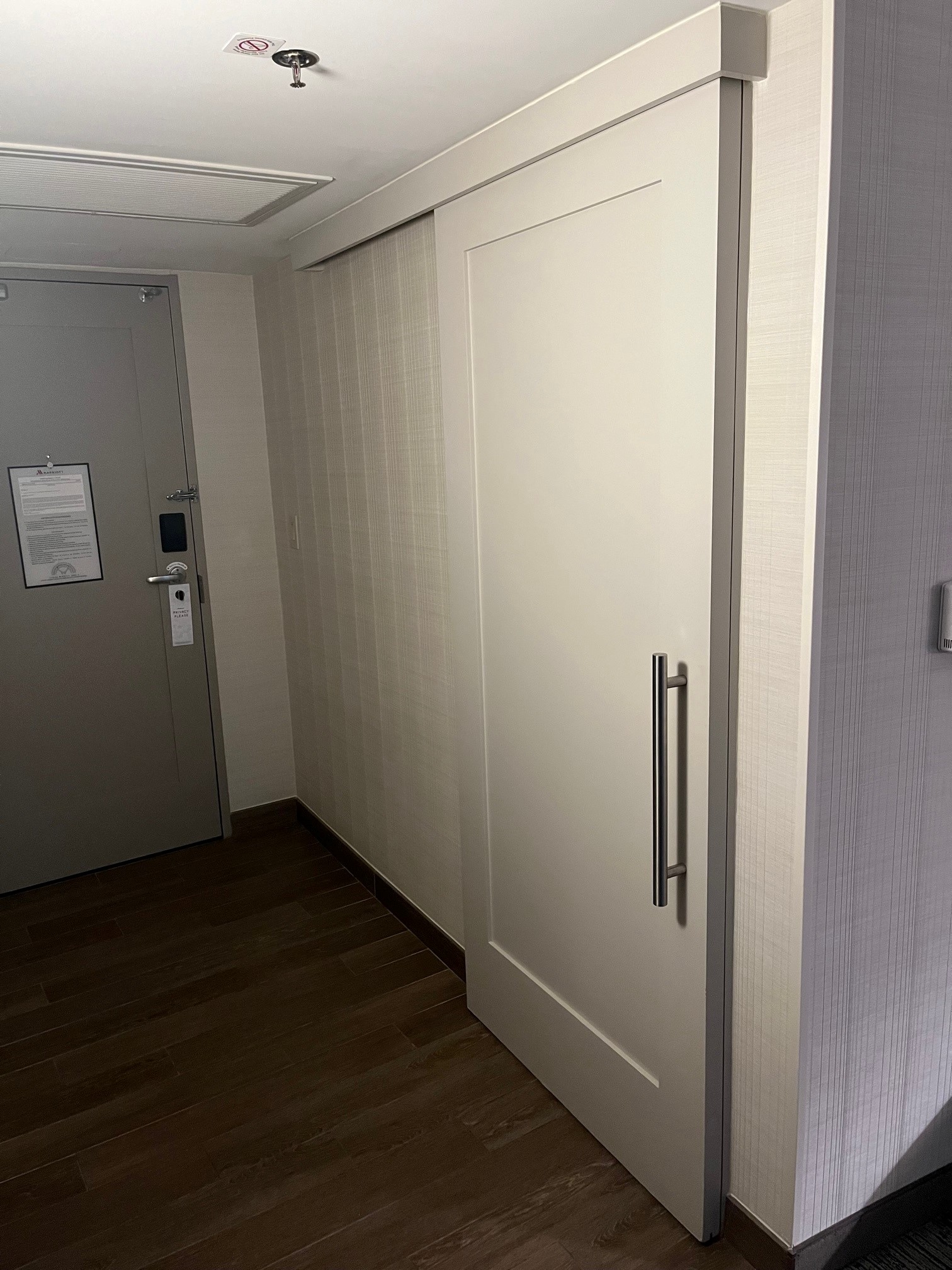
There is a flush pull on the inside, and this is how it looks with the door fully closed. The accessibility standards are not specific about flush pulls, but I was able to operate this door without tight grasping, pinching, or twisting of the wrist. Would you consider this accessible?
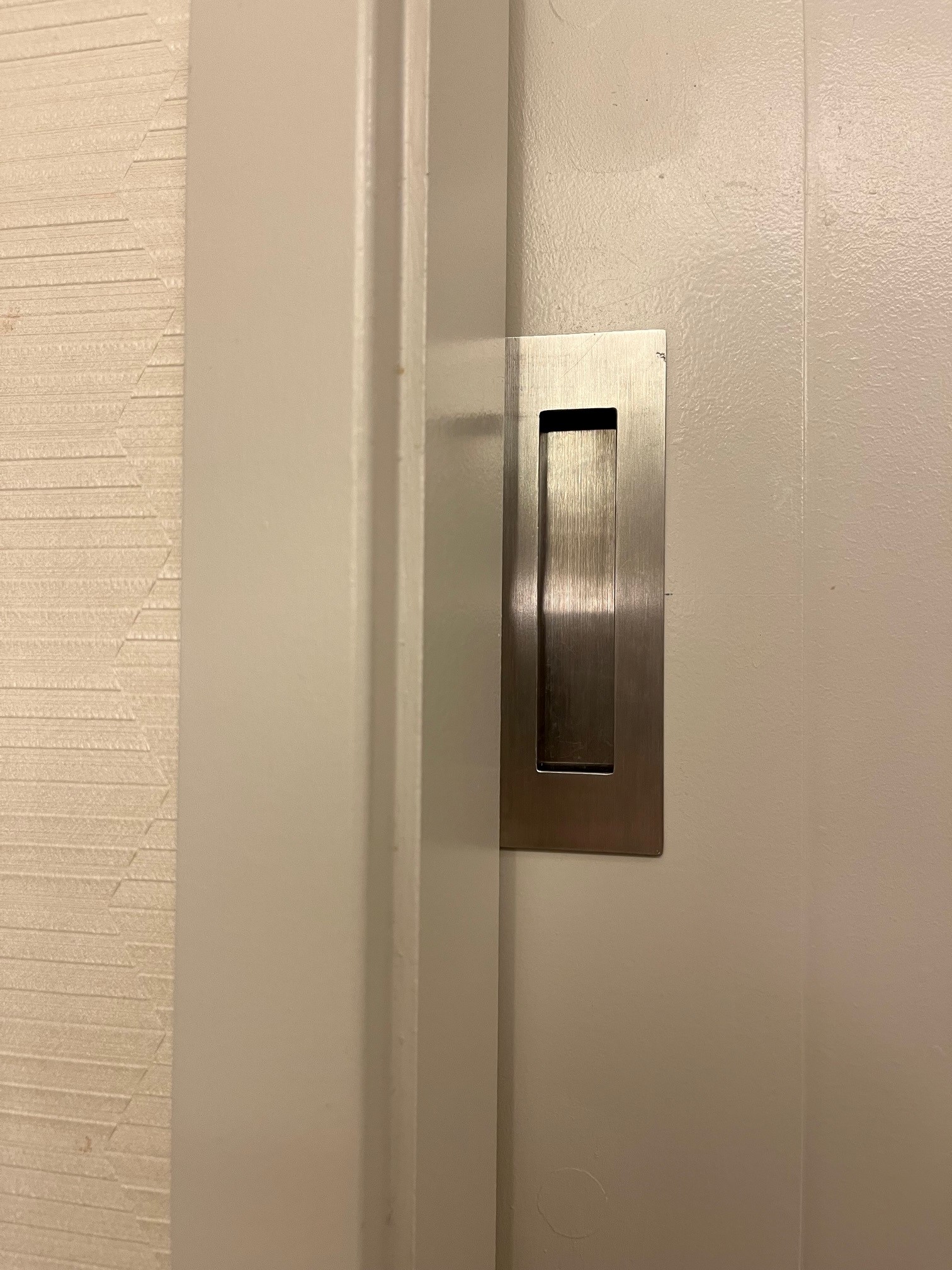
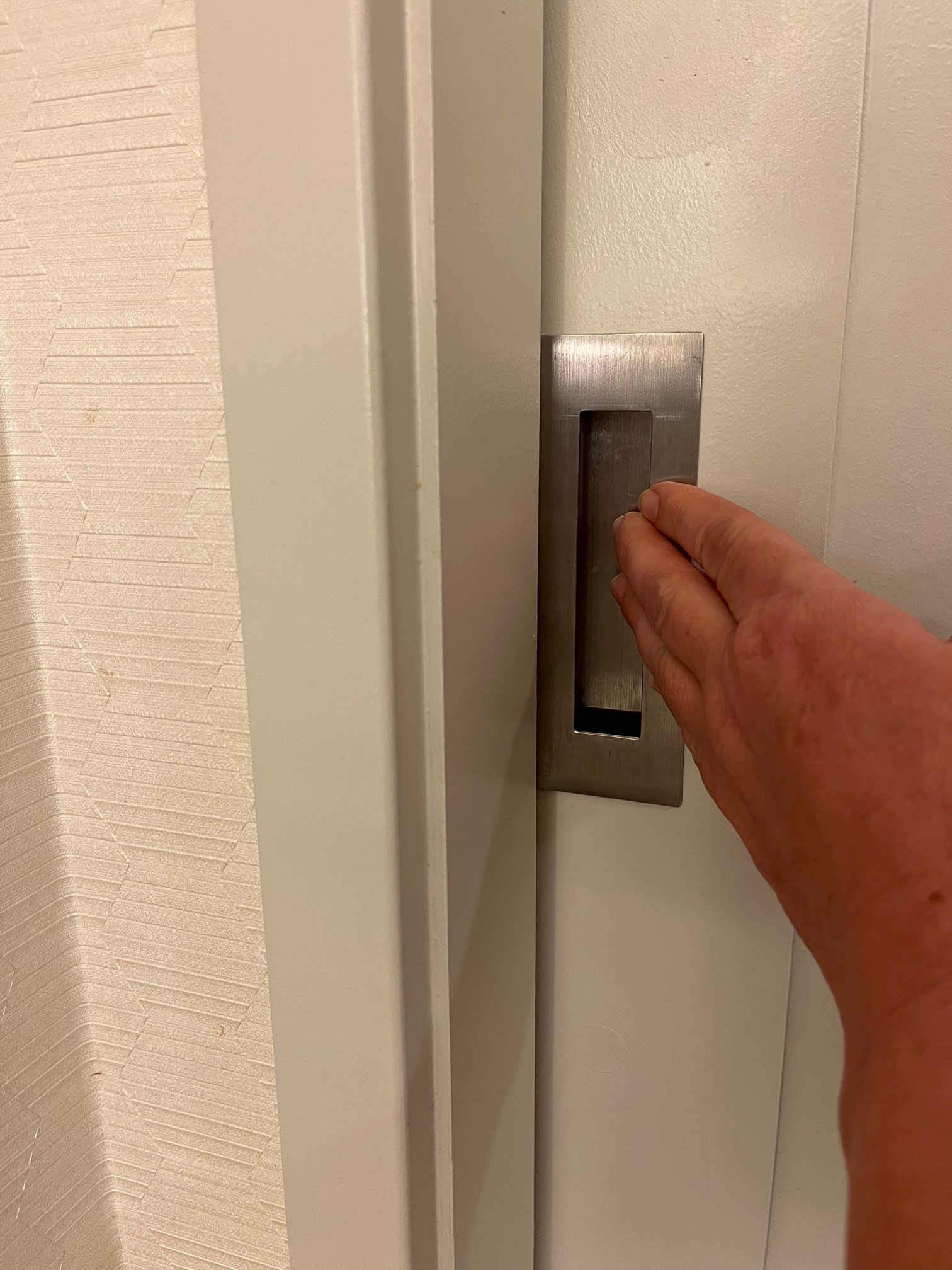
Here’s where the problem arises, IF the door is required to meet the accessibility standards (remember, use your imagination). When the door is left slightly open, the flush pull is exposed and usable, but once the door is fully open, the flush pull disappears.
Even if the door is not required to comply with the accessibility standards, it’s a little awkward to close the door from the inside, as there is no visible hardware. I’d like to see the surface pulls on both sides of the door, with a stop to prevent the door from opening so far that the pull hits the jamb. WWYD?

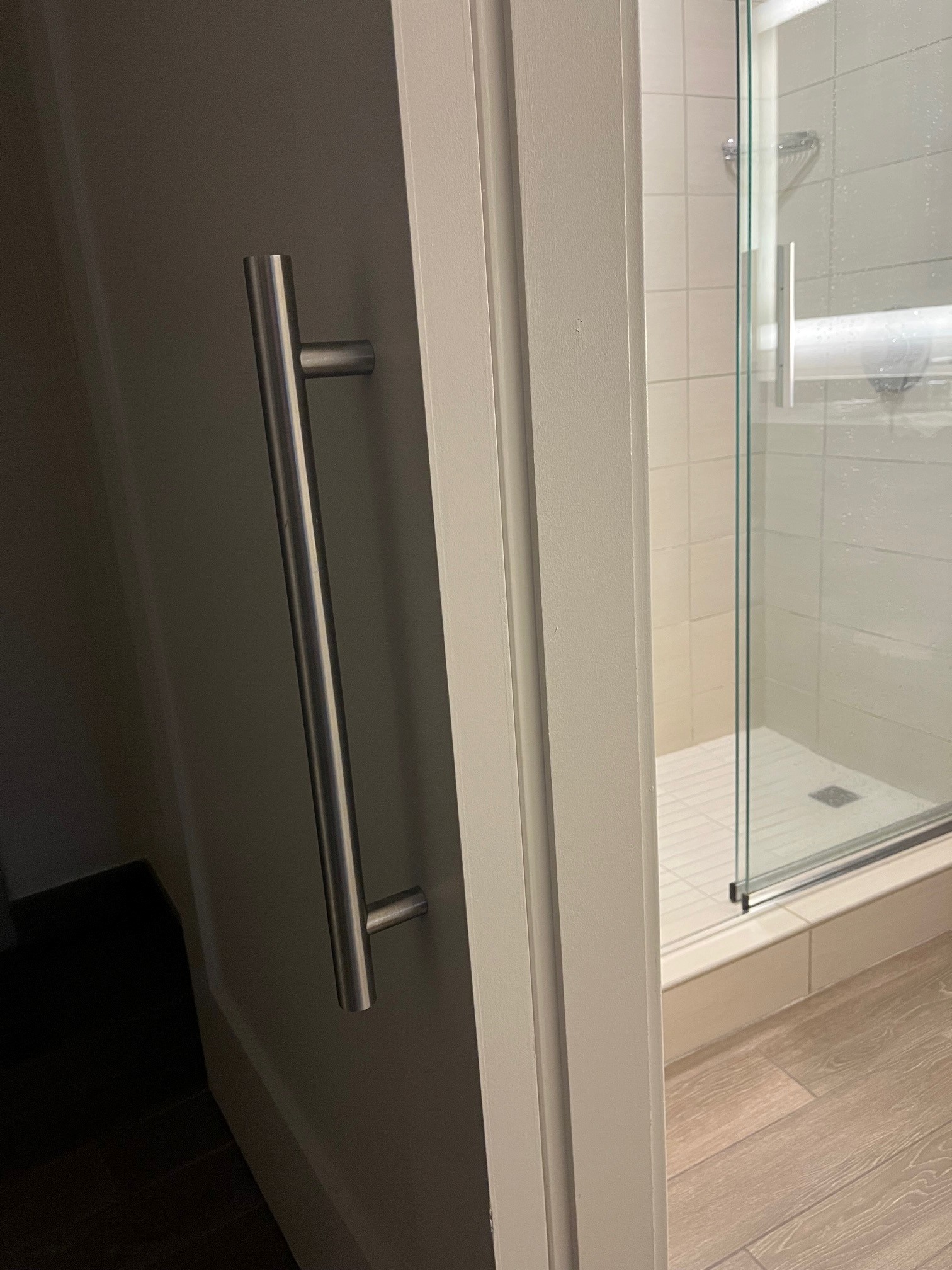
You need to login or register to bookmark/favorite this content.

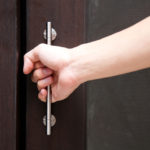
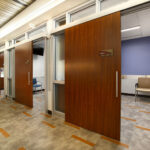




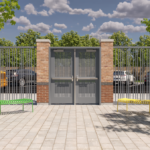

Great Post!
Well yes, it is a sliding door but not a pocket door, it is a barn door.
Accurate lock & hardware does manufacture ADA compliant locks and trim for these types of doors including an indicator.
It is odd but both the small ladder pulls as well as the flush pull are ADA compliant.
I personally prefer lever handles with a return to maximize my ADA compliance.
There are plenty of people out there with hand disabilities whose hands may slip off of a lever with no return.
Unfortunately, every time you mention ADA people automatically think of a wheelchair and not the deaf, blind, or multitude of other disabilities out there.
Flush pulls and creative disappearing pocket doors are fine for home use where people have time to get used to them. For hotels, they are not a good idea. Guests are in an unfamiliar environment and they don’t have time to learn how everything works. Guests are tired from traveling, some of them have long fingernails, weak fingers, or oversized hands. A design that’s a little less elegant visually but safer and easy to use will lead to a better guest experience. It’s a minor detail that the guest won’t comment on in a survey. They won’t specifically remember the strange feeling of using an unfamiliar recessed pull, they’ll just remember this wasn’t their favorite hotel on the trip.
Venetian Macau is an example of a hotel with really good design on the sliding door pulls. Guests can get a good grip on the handle, and their hand never comes near the wall in either the opened or closed position.Good design like that doesn’t happen by accident.
This type of sliding door to the bathroom has become typical for certain hotel chains, although the interior flush pull hasn’t been present on the inside of the door in the rooms I’ve stayed in making even harder to open the door when closed.
I’m with you. There should always be surface pulls on both sides, keeping in mind the position of the pulls takes away from the clear opening width, not allowing the door to fully clear the opening. Accessibility must be maintained.
I would ask when this door was installed, or year of the hotel build?
In the pass, this was typical for sliding (barn) doors.
After 2015, any sliding door I’ve installed has long pull handles on both sides, same as your picture.
We maintain a clearance of 1-1/2″ off the open and closed jamb (as per ADA) and with a minimum clear opening width of 28 inches, or larger if do-able with wider 48″ door leafs.
The recess pull cup your showing is typical on pocket doors, mostly in the back of the house area, and install a recess pull on the leading edge of the door, one that lays flush with the door, and a little pressure flips out to create a pull handle.